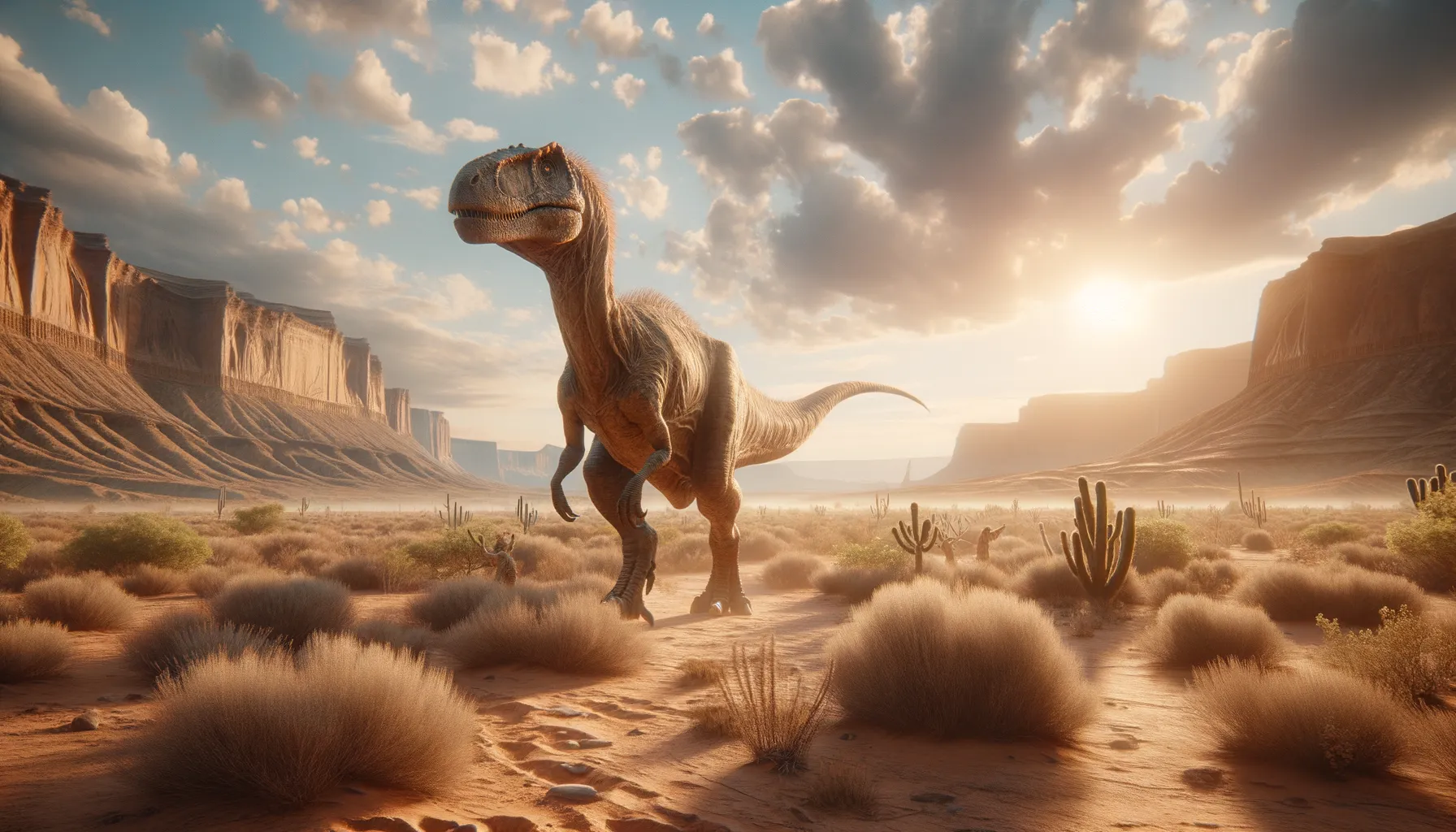
Seitaad
Small yet adapted to Jurassic desert life.
Period
Jurassic
Length
Roughly 3 meters (10 feet) long.
Height
About 1 meter (3.3 feet) at the shoulder.
Weight
Approximately 70 kilograms (150 pounds).
Seitaad was a small, herbivorous dinosaur that roamed the ancient landscapes of present-day Utah during the early Jurassic period. Its fossils offer insight into a time when vast desert environments were common. This dinosaur is notable for its relatively small size and adaptations that suggest it could thrive in arid conditions, providing clues about the climate and ecosystem of its time.
Diet
Seitaad primarily fed on low-lying vegetation. Its herbivorous diet consisted of ferns and other plants able to withstand arid conditions. This suggests it played a role in the thinning of local plant life, allowing sunlight to penetrate to the ground layer more effectively.
Hunting
Seitaad did not hunt, as it was a plant-eater. Instead, it foraged for food in its dry environment. This may have involved searching for sparse vegetation surviving in its arid habitat.
Environmental challenges
Living in a desert-like area presented challenges such as limited water resources and fluctuating temperatures. Seitaad likely had to travel long distances to find food and water, especially during dry spells. Predation would have also been a constant threat, leading to adaptations for stealth and evasion. Its small size enabled it to hide among rocks and sparse vegetation when under threat.
Speed
Moderate, adapted for survival in dry environments.
Lifespan
Estimated to live for several decades.
First discovery
Discovered in Utah, USA, in 2004.
Fun Facts
- Seitaad was a small dinosaur from the early Jurassic period, living roughly 185 million years ago.
- This dinosaur was about the size of a medium dog, measuring around 1.5 meters (5 feet) long.
- Seitaad is named after a Navajo sand monster, Seitaad is known for its remains being found in the Navajo Sandstone Formation.
- It was a herbivore, meaning it fed on plants, likely using its long neck to reach vegetation.
- Seitaad is believed to be closely related to sauropodomorphs, the ancestors of the giant long-necked dinosaurs.
- The fossils of Seitaad were discovered in southern Utah, in the United States.
- Despite its small size, Seitaad showcases some features that would later be seen in much larger sauropods.
Growth and Development
Seitaad likely grew quickly during its early years to avoid predation. This fast growth may have been supported by an abundant diet of available vegetation. Over time, Seitaad developed physical traits that allowed it to better survive its harsh environment. Its development likely plateaued earlier than some larger dinosaurs, helping it avoid detection.
Habitat
Seitaad inhabited arid regions of North America, characterized by sparse plant life and rocky outcrops. These areas would have offered some protection from predators and harsh weather conditions. The dinosaur's adaptation to this environment indicates it was well suited to cope with limited resources. Its presence in these areas suggests they were important ecosystems during the Jurassic period.
Interaction with other species
Though primarily solitary, Seitaad likely came into contact with other herbivorous dinosaurs. Competition for resources would have driven its behavior and habitat preferences. Predators, including larger carnivores, were a threat, necessitating stealth and avoidance strategies. Mutualistic relationships with other species, like those with birds or insects, may have helped in cleaning or grooming.
Natural lifespan
Seitaad had a natural lifespan that likely extended to several decades.
Reproduction
Seitaad likely used simple nesting strategies to lay eggs in sandy soil. Its reproductive cycle may have been timed to coincide with seasons of higher plant availability. The dinosaur's offspring were probably independent shortly after hatching, given the absence of substantial parental care evidence. Egg clutches were likely small, reflecting its limited size.
Social behaviour
Seitaad might have displayed limited social interaction, akin to many herbivorous species. Like other small dinosaurs, it might be spotted in loose groups when conditions permitted. While lack of overt social structures is expected, passive interactions might occur at watering holes or food sites. Brief groupings could provide safety in numbers against predators.
Fossil locations
Seitaad fossils have been principally discovered in Utah, contributing to our understanding of its habitat. The state’s arid historical environments fit the expected ecological niche this dinosaur inhabited. These finds are significant as they suggest wider distribution across the North American desert regions during the Jurassic period. Fossil evidence continues to illuminate the adaptations specific to these prehistoric conditions.
